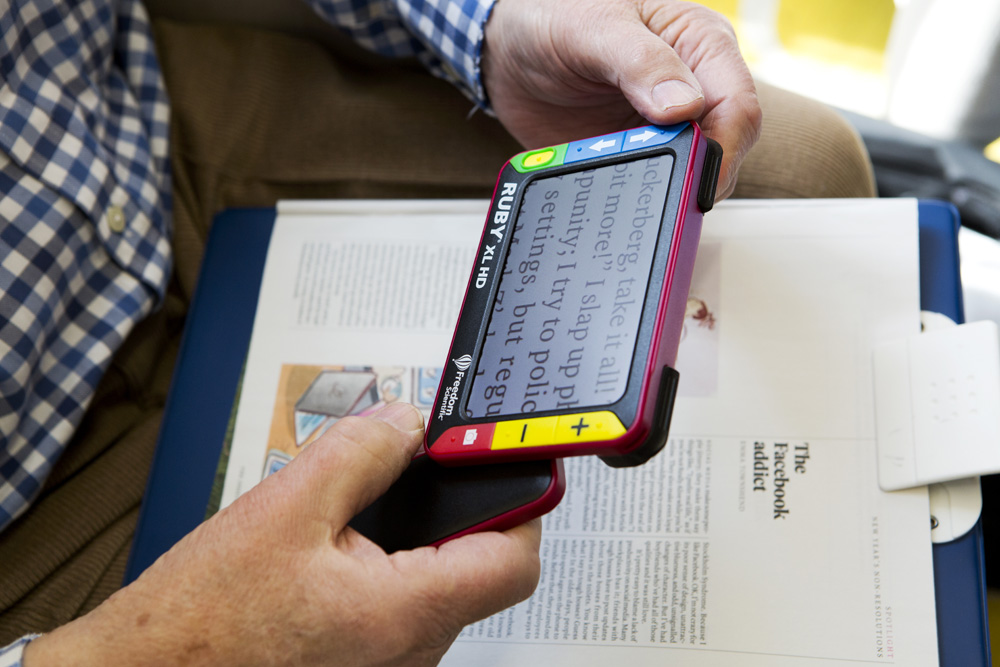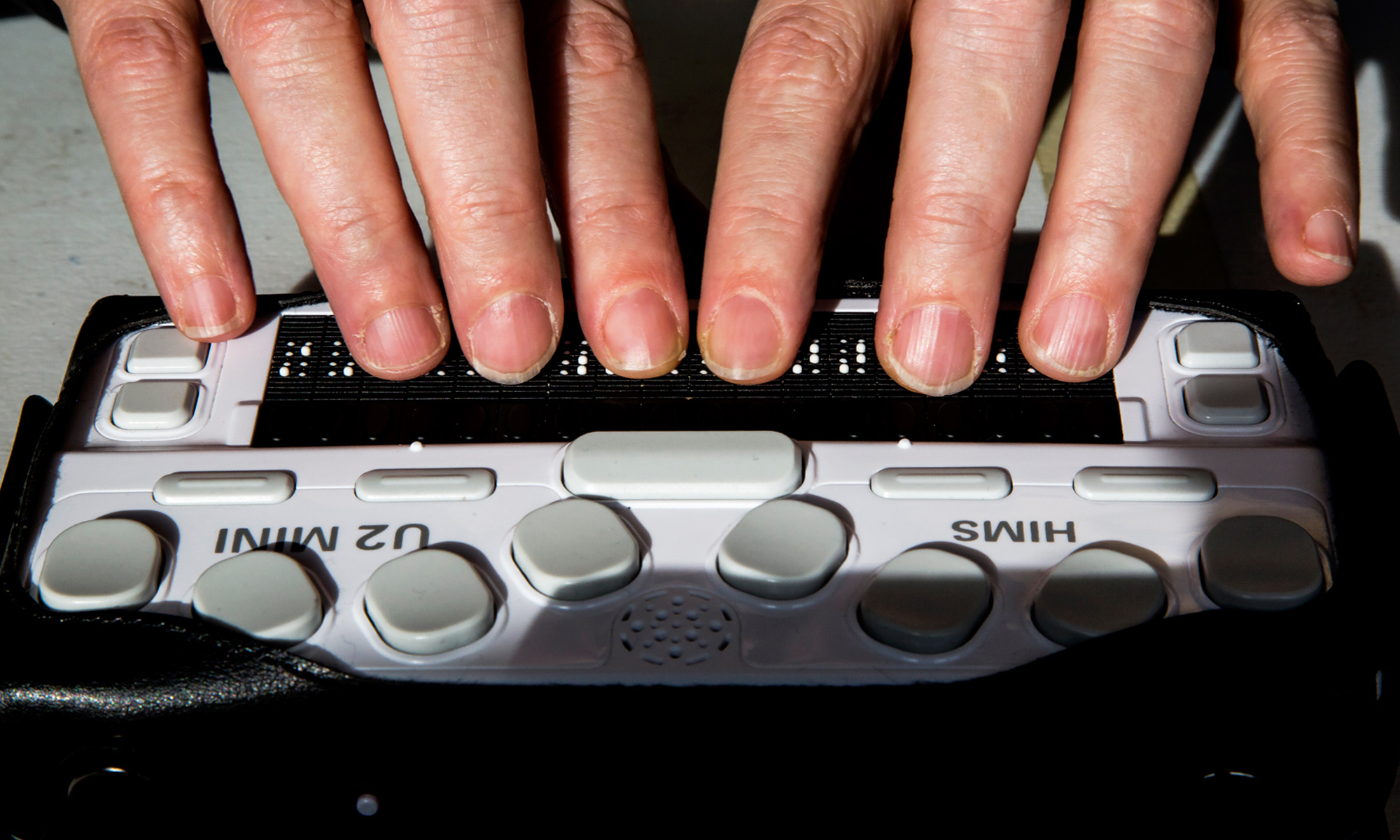An Overview to Life-Changing Assistive Technology for the Blind and Aesthetically Impaired
The improvement of assistive modern technology has ushered in a transformative era for individuals that are blind or visually impaired, offering devices that boost autonomy and enhance everyday experiences. Developments such as smart navigation gadgets and AI-driven applications are redefining how users engage with their surroundings, while accessible analysis solutions and clever home innovations assure to additional elevate the high quality of life.
Smart Navigating Equipment
Smart navigating devices are revolutionizing the method people that are blind or visually damaged connect with their environment. These innovative innovations, which incorporate GPS, audio comments, and haptic signals, supply individuals with important info regarding their surroundings, improving their freedom and wheelchair.
One popular example is using smart walking sticks geared up with sensors that discover obstacles and supply real-time responses via resonances or audio hints. These devices allow users to browse intricate environments, such as busy roads or crowded public spaces, with increased confidence. Additionally, wearable devices, such as clever glasses, are being created to help in recognizing faces, checking out message, and identifying objects, even more boosting the user's spatial understanding.
In addition, smart navigation tools are significantly incorporating expert system to evaluate data and adjust to individuals' preferences. This individualized technique not just enhances navigating effectiveness yet also fosters a sense of empowerment amongst individuals. As modern technology continues to advancement, the potential for clever navigating tools to produce an extra inclusive and easily accessible world for people that are blind or aesthetically damaged continues to be promising, ultimately improving their everyday experiences and communications.
Ingenious Mobile Applications
Mobile applications are emerging as powerful devices for assisting individuals that are aesthetically impaired or blind, using a series of performances that enhance daily living. These applications harness advanced technology to help with daily tasks, enhance access, and advertise freedom.
One group of cutting-edge mobile applications concentrates on visual recognition. Applications like Be My Eyes attach customers with sighted volunteers via video calls, enabling real-time help for tasks such as checking out tags or browsing unfamiliar atmospheres. In a similar way, applications like Seeing AI utilize expert system to describe environments, checked out message, and determine objects, supplying users with critical information at their fingertips.
One more significant area is navigation and orientation. Applications such as Aira and Nearby Explorer give audio advice, aiding customers browse urban spaces easily. They offer customized support, allowing for a more positive exploration of the environment.
Furthermore, health and wellness applications accommodate details requirements, such as drug management and health and fitness tracking. These applications intend to cultivate a holistic method to well-being, ensuring that customers can preserve their wellness independently.
Wearable Assistive Gadgets
Wearable assistive devices represent a considerable development in technology developed to sustain individuals that are visually impaired or blind. These gadgets improve flexibility and self-reliance by providing real-time feedback regarding the surrounding setting. Amongst the most significant wearable technologies are clever glasses equipped with sensing units and electronic cameras, which can determine obstacles and relay crucial info via sound hints.

An additional ingenious choice consists of wrist-worn gadgets that utilize ultrasonic waves to identify barriers and provide navigational support. These gadgets usually come with personalized setups, permitting users to customize the notifies to their particular needs.
The assimilation of expert system in wearable assistive innovation is also notable, why not try these out as it constantly enhances the accuracy and responsiveness of these devices. Overall, wearable assistive gadgets are changing the lives of the aesthetically damaged and blind, promoting higher freedom and improving high quality of life with cutting-edge solutions.
Accessible Reading Solutions
Obtainable reading remedies play a vital role in enabling individuals who are aesthetically impaired or blind to involve with text across various layouts. These solutions include a variety of devices and modern technologies made to boost analysis experiences, from conventional print materials to electronic material.
One popular option is Optical Personality Acknowledgment (OCR) technology, which converts published text right into electronic format, enabling customers to pay attention to or read the web content utilizing screen readers. Additionally, specialized e-readers geared up with text-to-speech capabilities supply adjustable reading experiences, enabling users to adjust font sizes and history shades for enhanced presence.
One more efficient method is braille display screens, which supply tactile responses by transforming electronic message right into braille. This enables people to check out with touch, promoting better self-reliance and accessibility to literary works. Mobile applications designed for reviewing checked files or publications can empower users with instantaneous access to a huge library of materials (Smart glasses for the visually impaired).

Smart Home Technologies
Smart home modern technologies have actually transformed the method people who are blind or visually damaged connect with their living settings, boosting both independence and safety. od eye These ingenious solutions utilize automation and connection to develop an obtainable space tailored to the requirements of individuals.
Smart audio speakers and voice-activated assistants give hands-free control over numerous gadgets, allowing customers to adjust lights, temperature, and safety and security steps through basic voice commands. This capability decreases reliance on sighted aid and cultivates a feeling of autonomy. Additionally, clever lights systems can be personalized to deliver acoustic comments or responsive signs, making it possible for people to navigate their homes better.
Moreover, protection systems outfitted with wise video cameras and sensing units can send out real-time alerts to individuals, enhancing individual safety and security without necessitating nearest optometrist aesthetic verification. Automated door locks offer comfort, allowing customers to protect their homes effortlessly.
Integrating wise home technologies not just enhances day-to-day living but also encourages social communication with attached devices - Smart glasses for the visually impaired. With continuous improvements in assistive innovation, the future shows up encouraging, as even more options will certainly emerge to additional encourage individuals that are aesthetically damaged or blind, making sure a much more comprehensive and independent way of living
Final Thought
Finally, the improvements in assistive modern technology for the visually damaged and blind stand for a substantial jump toward boosting freedom and quality of life. Smart navigating devices, innovative mobile applications, wearable tools, obtainable analysis remedies, and smart home modern technologies jointly cultivate a comprehensive setting. This combination of technology not just enhances movement and daily living but additionally encourages individuals to involve fully with their environments, promoting higher freedom and participation in culture.
Developments such as wise navigation tools and AI-driven applications are redefining exactly how individuals engage with their surroundings, while easily accessible reading options and wise home technologies assure to more elevate the top quality of life. As innovation proceeds to breakthrough, the potential for wise navigation tools to produce a more accessible and comprehensive world for people that are blind or aesthetically impaired stays promising, ultimately reshaping their day-to-day experiences and interactions.
Wearable assistive devices stand for a considerable development in modern technology created to sustain individuals who are visually impaired or blind. Among the most significant wearable technologies are smart glasses furnished with cameras and sensing units, which can identify challenges and relay crucial information via audio hints.
Smart navigating devices, innovative mobile applications, wearable gadgets, obtainable reading services, and smart home innovations collectively cultivate an inclusive atmosphere.